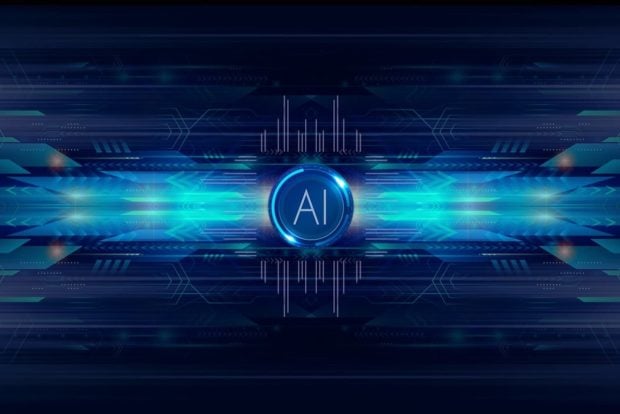How to reform and rewire government to make the most of technology

Following this year’s Global Government Summit, Grace Yip, Managing Director, Health and Public Service at Accenture, shares insights and case studies on how AI can make government more effective – and how departments need to reform to make the most of the potential
How can AI help make government more productive?
AI can help make government more productive by automating routine tasks, streamlining processes and providing valuable insights.
By automating repetitive tasks, AI allows civil servants to focus on more strategic and impactful work. Advanced data analytics can be used to streamline the processing of routine applications and sort them based on complexity, enabling officers to handle more complex cases more effectively. AI can also support decision-making by providing timely and accurate insights, leading to more efficient and effective public service delivery.
What are examples of how governments currently using AI to become more productive now?
Governments are currently using AI to become more productive through various initiatives. For example, the Spanish Ministry of Justice has implemented a generative AI-powered judicial search engine named Delfos, which reduces the time required for staff to find specific information by 40%. The U.S. Department of Defense is using an AI tool known as ‘Acqbot’ to expedite the federal acquisition process by automating contract text generation, increasing the speed of contract writing by about 400%.
Estonia has rolled out over 130 AI projects, including AI in healthcare to support medical diagnostics and in traffic management to optimise traffic flow. This rapid and extensive deployment of AI is a result of foundational investments made over the years. Estonia developed X-Road, a secure data exchange layer that facilitates the seamless sharing of information between different systems. They also introduced universal digital identity cards, which provide secure online authentication and digital signatures. Additionally, Estonia adopted blockchain technology to enhance the security and transparency of public services and data handling. By the early 2010s, the country had already implemented digital services such as e-Tax, e-Health and e-Residency, which laid a robust foundation for the integration of AI technologies. These foundational investments have enabled Estonia to scale AI projects at speed and with efficiency.

In Singapore, tech tools are being used to ease the workload of social workers. For example, Scribe, an AI transcription service, cuts down the time needed for transcribing client interactions from 60 minutes to about 30 minutes. This efficiency is crucial for social workers managing 20 to 50 clients. Another tool, ‘IM-OK’, a tablet for health check-ins, enables seniors to report their well-being, reducing the frequency of physical visits and allowing social workers to focus on those who need more attention. These advancements help in managing caseloads more effectively and in reducing the risk of burnout among social workers.
Do governments need to rewire how they work to make the most of the potential of data and AI in public service delivery?
Yes, governments need to reinvent how they work to fully harness the potential of data and AI in delivering public services. According to Accenture report, this involves adopting new talent strategies and integrating advanced technology tools to enhance agility and resilience.
Establishing a strong digital core that seamlessly incorporates cloud computing, data and AI is key, with a strong emphasis on security and ethical use. Upskilling the workforce to effectively utilise these technologies, redesigning workflows to integrate AI, and fostering a culture of innovation and experimentation are critical steps. Engaging citizens in the design process and building trust through transparent and secure data practices are also essential to ensure the transformation is both effective and inclusive.
What are the best examples of how governments have reconfigured how they work to make the most of technology?
These initiatives demonstrate how governments are leveraging technology to enhance productivity, improve citizen engagement and streamline service delivery:
- Seoul’s ‘Seoul Talk’: The city is expanding AI chatbot messaging services to handle public inquiries and complaints, enhancing citizen engagement and service delivery.
- Singapore’s Single Sign-On (Singpass): This system simplifies access to various government services, reducing login fatigue and improving the user experience, with annual transactions growing from 4.5 million to 57 million in the first 10 years.
- Singapore’s Central Provident Fund Board (CPFB): The digital transformation project at CPFB is another great example of how the government has reconfigured its operations to make the most of technology. The CPFB successfully modernised its mainframe applications by converting 16 million lines of COBOL code to Java, which streamlined development and maintenance processes, making the system more efficient and easier to update. Additionally, the CPFB adopted test automation, with over 70% of test cases now executed automatically. This has significantly reduced testing time and enhanced system stability, enabling faster and more reliable rollouts of new features and updates. Furthermore, the CPFB launched a user-friendly, mobile-first digital platform that provides personalised content and tools aligned with CPF members’ life stages and financial needs. Features such as a streamlined dashboard, an enhanced calculator, and targeted content have made it easier for members to manage their CPF accounts and plan for their financial futures. These changes have not only improved the efficiency and reliability of the CPFB’s operations but have also enhanced the overall experience for citizens, making it easier for them to navigate and manage their social security services.
In a transformative way, Accenture’s Generative Engine for Intelligent Exploration (GEIE) is being used to overhaul the software development lifecycle (SDLC) in collaboration with public services agencies in Singapore. GEIE streamlines and automates various phases of the SDLC. In the Discovery phase, GEIE helps identify pain points and provides insights through a domain knowledge platform and code-to-documentation tools. In the Analyse and Design phase, it converts user stories into detailed documentation and generates pseudocode from requirements. During the Build phase, GEIE creates and optimises code for quality, and in the Test phase, it automates the generation of unit tests, test cases and test data. For maintenance, GEIE supports impact analysis and debugging, ensuring that the entire SDLC is more efficient and effective.
How can governments use AI to catalyse better policymaking?
These applications of AI can significantly improve the policymaking process by making it more data-driven, efficient and responsive to citizen needs:
- Scenario modelling and outcome prediction: AI can model different scenarios and predict outcomes at a systems level, helping policymakers make more informed and strategic decisions, especially when dealing with complex challenges.
- Accelerated research: AI can speed up research by processing large volumes of data quickly, providing detailed insights and analyses that can inform policy decisions.
- Public opinion analysis: AI can analyse public opinions and sentiments from various sources, such as social media and surveys, enabling policymakers to better understand and address the needs and concerns of citizens.
- Enhanced public services: AI can be used to enhance the efficiency and effectiveness of public services, such as healthcare, transportation and public administration, which can inform and improve policy.
- National policy twin: AI can help create a comprehensive digital model of policy systems, known as a ‘national policy twin.’ This model can simulate the impacts of different policy options, providing a more holistic view of potential outcomes.
And how can AI help create unlock personalised public services?
AI can significantly enhance the personalisation and efficiency of public services, improving the overall citizen experience:
- Simplified access to information and services: AI can make it easier for citizens to find and access the information and services they need, reducing the complexity and time required to navigate government systems.
- Automated routine transactions: AI can automate routine transactions, such as form filling and application processing, making these processes faster and more efficient for citizens.
- Citizen advocacy: AI can act as an advocate for citizens, helping them understand complex processes and guidelines and providing personalised guidance and support.
- Predictive needs and resource allocation: By integrating data from various sources, AI can predict citizen needs and allocate resources more effectively, leading to more responsive and personalised service delivery.
- Informed policymaking: AI can provide valuable insights to policymakers, helping them make more informed decisions that better address the diverse needs of the population.
The Global Government Summit, organised by Global Government Forum and hosted by the Government of Singapore, was held on 21 and 22 January 2025. Grace Yip, from event knowledge partner Accenture, spoke in the session: Engaged, energised and empathetic: how leaders can help build the best public service.

















